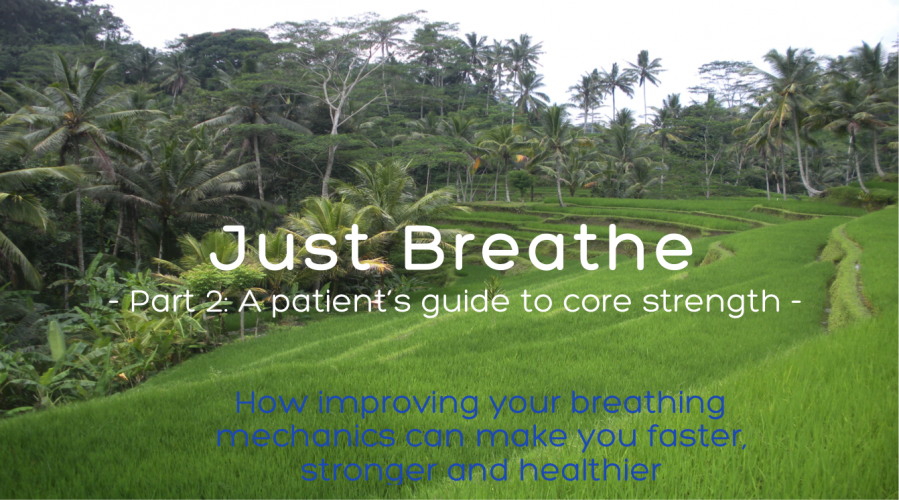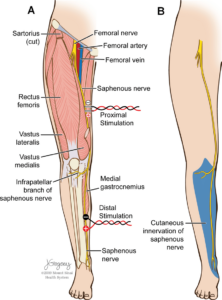As a follow-up to our last blog post, in which we discussed the basics of core anatomy, strength, biomechanics and its relationship to back pain, I want to provide patient and readers with some basic exercises for core strengthening. Whether you are a couch potato, weekend warrior or champion athlete, you need to have the basic core strength and stability to perform your daily activities. I have seen a number of well conditioned athletes that when put through functional testing, fail to demonstrate the necessary core strength for their jobs. Often these athletes have coinciding back pain that is attributable to this dysfunction. Being able to do a million sit-ups or a really long plank does not equate to great core strength, so read on my friends!
Based on the best evidence, it is my practice to take my patients through a linear progression of exercises for ensuring proper core function.
I can assure you that 90% of the people who I test cannot make it through a progression without demonstrating some weakness, imbalance or inability to complete a movement pattern properly.
You have to be able to walk before you can run. I ensure that everyone has mastered the basics of proper core function before they move onto more strenuous exercises that simulate situations in life and sport. While the exercise progression below seems simple, it is important to master each step.
The progression I run through, is based partly on the SFMA protocol (Selective Functional Movement Assessment) and general rehab principles. With each progression, the patient is made to perform each exercise in the following positions.

- lying down (supine)
- quadruped
- kneeling
- standing
This progression ensures that the activity can be performed with increasing demands of gravity. There is no point in trying to stress the core in a standing position if the body cannot stabilize itself against gravity. Start slow and do it right.
What exercises to do to train your core properly
The progression I follow for core strengthen is the following
Diaphragmatic breathing → Abdominal Hollowing → Abdominal bracing → Hip hinging → Gluteal activation → McGills Big Three→ Lifts and Chops → Dynamic Core exercises with functional movements
Today we will focus on the basics and start with breathing.
First, please take to read this post by Dr. Andreo Spina, who perfectly summarizes what I tell almost all of my patients about breathing
Having read this, it is easy to understand that breathing may be more important to your physical and mental health than you previously thought. If you are not convinced yet, like I was early in my chiropractic education, please consider the following.
In last weeks post we noted that increased intra-abdominal pressure generated when one breathes into the abdomen by lowering the diaphragm, helps to stabilize the spine.

Not surprisingly, research is beginning to catch up and show that those with chronic low back pain breath different from normal subjects. In the linked study, low back pain sufferers were more likely to exhibit less diaphragm excursion and a breathing pattern more consistent with chest breathing.
Those with low back pain also show that their diaphragms fatigue faster than normal subjects. Ergo, with greater fatigue and poorer diaphragm function, there is less stability of the spine and it is left more susceptible to injury and re-injury.
Don’t buy into what I am saying yet? Then please consider that when subjects with recurrent low back pain are asked to breath against resistance to simulate fatigue while standing, they demonstrate reduced proprioception in the lumbar spine. Proprioception means the ability of the nervous system to know where a particular muscle, bone, joint, or tissue is in space. If proprioception is worsened for the low back while standing, there is little less chance it can act to stabilize itself.
However, when researchers placed these subjects on an 8-week high intensity training program of inspiratory muscle training (IMT), the “individuals with LBP showed an increased reliance on back proprioceptive signals during postural control, and improved inspiratory muscle strength and severity of LBP”. They had less pain, better diaphragm strength and better proprioception
How to train your breathing.
Some things to consider
- if you have been breathing “incorrectly” for a long time it is more difficult to change = practice more often
- practicing everyday for a little bit is better than a lot of practice on interspersed days
- the object is also to use this time to relax as a form of pseudo-meditation
- like every skill, perfect practice will make for perfect execution – so stick to it
- FIT – 2 times per day, for 3-5 minutes, everyday, about 5 seconds per breath
- start the exercise with lying first, then move through the SFMA progression
Getting started
- Lie down with your knees and hips bent
- Place your dominant hand at the level of your belly button with the thumb pointed backwards and the pointer finger aimed at the tummy
- Your intent is to breath in such that pressure is felt against the thumb and second finger during the inhalation. It should feel like there is a balloon sitting underneath your belly button and it is expanding in all directions
- When you breath in through the nose, let the neck muscles, chest and upper back be silent – as the video says, the shoe on the chest should not move

As the diaphragm drops during inhalation, the organs of the abdomen are compressed in all directions like an expanding balloon
Do not expect to be perfect at this the first time, as this takes practice.
- Use a 5 second count for your breath in and expand the abdomen IN ALL DIRECTIONS
- Exhale by letting the belly fall and pressure lessen on your thumb and pointer finger
A progression to this activity is to loop a resistance band (ie Theraband) around the abdomen, encircling it at the level of the belly button. When breathing in through the belly, resistance should be felt against the band, which will add another level of difficulty.
Once this progression is mastered in the hours, days or weeks after you first try this, you can move to performing it while quadruped then kneeling then standing.
Whether you are a low back pain sufferer or an athlete looking to improve their performance, this is an essential skill that should be mastered. At the very least, it acts as an opportunity to spend five minutes in peace, to be mindful of your body and brain, and provide some always needed relaxation.
Just breath!




